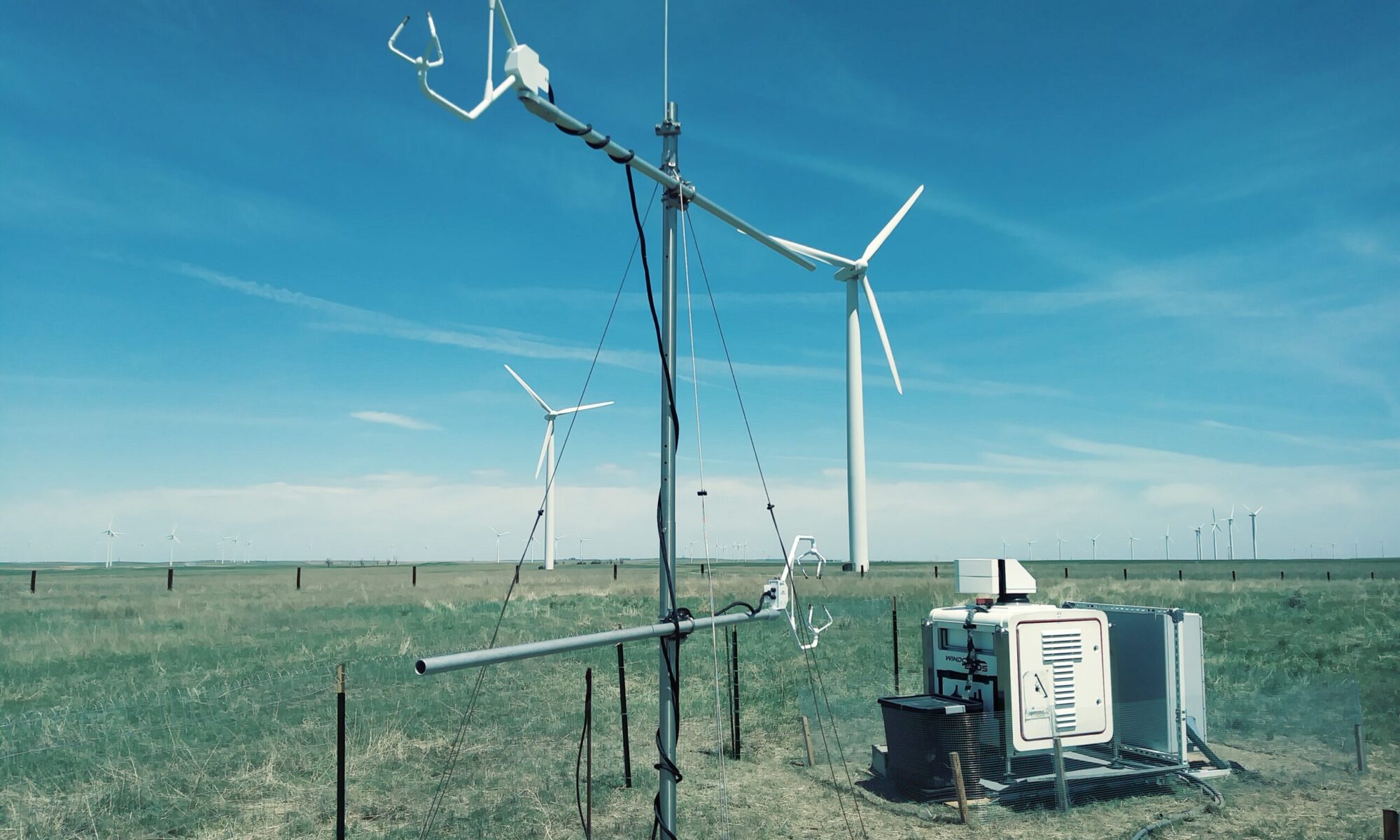
About
The AWAKEN campaign was a large-scale field campaign combining the efforts of multiple universities, national laboratories, and industrial partners, both nationally and internationally. The campaign focused on several phenomena such as wind turbine wakes, wind farm wakes, and interactions between the planetary boundary layer and wind farms, taking advantage of five wind farms installed in relative proximity. It took place in north-central Oklahoma in the Southern Great Plains region of the United States. The WindFluX laboratory maintained several instruments at one of the AWAKEN sites, including two doppler scanning LiDARs, two sonic anemometers, one cup-and-vane anemometer, and one temperature probe. All collected data is publicly available at the Atmosphere to Electrons website.
Scanning strategy
One of the scanning LiDARs (a Leosphere WindCube 200S) performed wide-angle plan-position-indicator (PPI) scans to measure the inflow and wakes to the King Plains wind farm. The other scanning LiDAR (a Halo Photonics Streamline XR) performed similar PPI scans facing in the opposite direction as well as vertical scans, 6-beam doppler-beam-swinging (DBS) scans, and range-height-indicator scans (RHI) aligned with the incoming wind direction. The 200S performed PPIs between 300^∘ and 90^∘ with a resolution of 1^∘ in azimuth angle and between 1^∘ and 28^∘ in elevation angle with a higher resolution close to the ground. The Halo XR performed PPIs between 90^∘ and 240^∘ with a resolution of 1^∘ degree in azimuth angle and with similar elevation limits to the 200S PPIs. The RHI scans performed by the Halo XR also kept a higher resolution near the ground. Full details on the scanning strategy can be found in Matteo Puccioni et al 2023 J. Phys.: Conf. Ser. 2505 012045.

You must be logged in to post a comment.